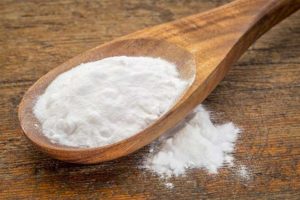
Sodium (salt) is essential for normal growth and survival but the body does not require sodium in large amounts. A man has evolved in a way where there was no requirement of added salt in foods! The human body has, therefore, developed mechanisms to maintain the blood pressure and renal blood flow even on low levels of salt intake. The human body requires only1.1-3.3 g of sodium or 2.8-8.3 sodium chloride per day; as per the Food and Nutrition Board of National Academy of Sciences. Sodium ingested in the diet is absorbed from the gastrointestinal tract and is removed by the body through waste like urine, sweat etc.
Historically, salt has also been used as a food preservative especially as salted fish and meat were a part of early daily diets. When used with carbohydrates salt is considered a taste enhancer. Some studies carried out on the populations have documented that some primitive people were habitually on very low sodium intakes. However, in modern times sodium is very much a part of daily diets and is used extensively as a food preserver even in processed foods.
Mostly, the dietary sodium is found in the form of sodium chloride and is 40% sodium and 60% chloride. Excess sodium in the diet is said to contribute to hypertension in genetically prone individuals. Societies differ greatly in respect of the amount of sodium chloride consumed and is related to food habits of different cultures. Therefore it is necessary to consider sodium requirements and the limits of safe intake in order to avoid metabolic consequences of excess intake of sodium chloride.
Sodium sources
The daily diet provides 90% sodium from sodium chloride (salt) and only 10-15% of salt comes from natural foods. Natural diets in India are predominantly plant-based and so sodium content does not exceed 300-400 mg of Salt (1g of NaCl). Modern-day habits of indulging in processed foods and salted snacks have increased the daily intake of sodium content. Almost 1/3 of salt is present in food before processing, 1/3 is added during cooking and another 1/3 is added at the table. Data presented by the National Nutrition Monitoring Bureau (NNMB) indicates that salt consumption ranges from 5 to 30 grams in different states of India. The amount of sodium ingested through water sources can differ from place to place. The sodium content of water can vary from 20 mg-235 mg/L. The sodium content of water can become a problem if the restriction in salt intake has been recommended for health reasons. As compared to other nutrients salt intake varies from population to population.
Sodium Intake in Hypertension
Hypertension is one of the leading health problems worldwide and treatment is expensive. While kidney problems could also cause hypertension but sodium is considered the main culprit. The relationship between salt and hypertension is well documented in a number of studies and clinical observations. In India, 10% of the attributed deaths are due to hypertension and this appears to be an increasing issue. It is essential to have solutions at the dietary level to decrease hypertension, salt being one of the important factors in the genesis of blood pressure. It may be pertinent to note that an epidemiological study involving nine states of India revealed a prevalence of 24-25% hypertension even in rural adult population. Apart from its relationship to hypertension, at intakes of 590-680mmol daily, healthy individuals can also develop water retention.
Sodium requirements for Infants
The main determinants of sodium requirements of infants are a rate of growth and losses through the skin and other waste. Sodium concentration of fat-free tissues after birth is 90mmol/kg of lean body mass. Obligatory waste losses are 2mmol/day. Added requirements for growth, point towards a minimal sodium requirement of sodium for infants and young children comes to around 2.5mmol/day. The sodium content of mother’s milk is higher immediately after delivery (65-75mmol/L) and falls hugely by day three. Mature human milk contains 7mmol/L. Thus breast milk is adequate for infant growth, even if loss through the skin is higher. Formula-fed infants, in general, have a high intake (10-50mmol) from 2 months to 10-12 months. Proprietary formulations contain 7-17mmol/L. Cow’s milk contains 21mmol/L.
Sodium requirement during Pregnancy
In early pregnancy, there is an increase in sodium loss. Some conditions during pregnancy could inhibit sodium reabsorption while others could increase sodium reabsorption. On the basis of average weight gain of 11 kg during pregnancy of which 70% is water, the sodium requirement in pregnancy is calculated to be about 750mmol/L. Therefore the only 3mmol of sodium/day above the non-pregnant requirement is needed and is easily met by a usual diet of pregnant women. In Indian situation, with a gain in body weight of about 6.5 kg of which 70% is water, the sodium requirement will be much less and there is no need for extra sodium.
Recommended Dietary Intake of Sodium
Globally, the most common cause of sodium deficit is acute diarrhea. In general, one can easily manage with less than 1mmol of sodium. A safe and adequate level is 1100-3300 mg/day. The minimum requirement for a healthy person is 500 mg of sodium for adults and for infants and children, 58mg/day. The maximum daily intake of sodium chloride should not exceed 5 grams per day.
The recent WHO Consultation on Global Strategy recommends 5 g of salt /day to prevent chronic diseases particularly, hypertension, which is a major problem in India. From studies, it is evident that undesirable effects of sodium intake are seen when consumption is over 100mmol/day. The natural diet in India provides less than 1gram of sodium chloride, cooking salt can, therefore, be reduced from 10g to 5-6 g/day to prevent the long-term effects of excess sodium intake.
The views expressed in this article are based on ICMR recommendations.
Leave a Reply